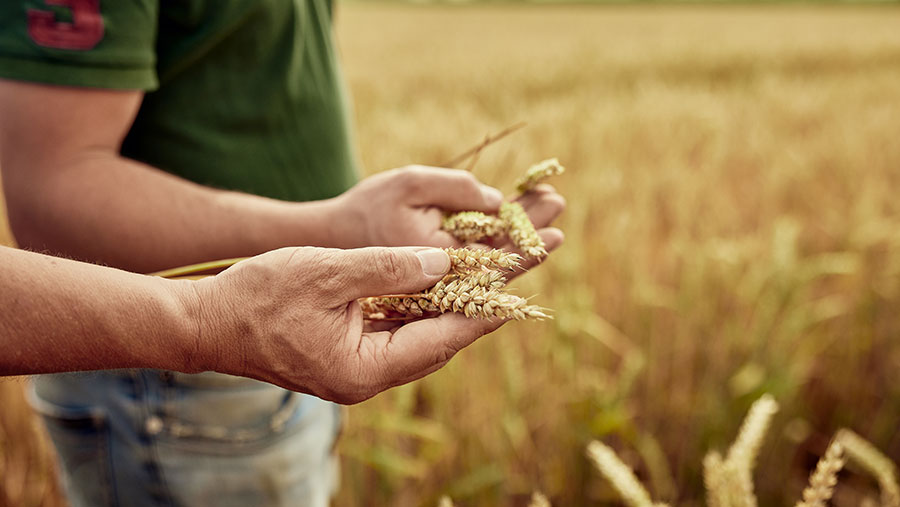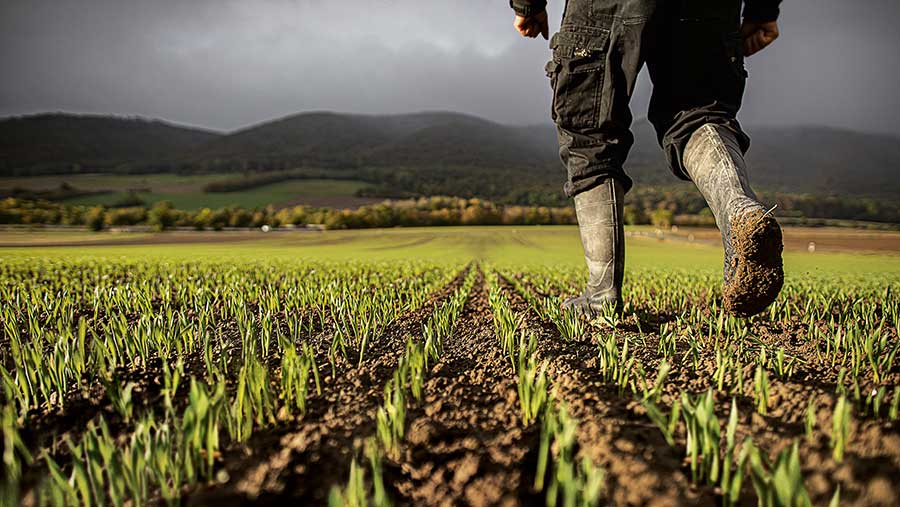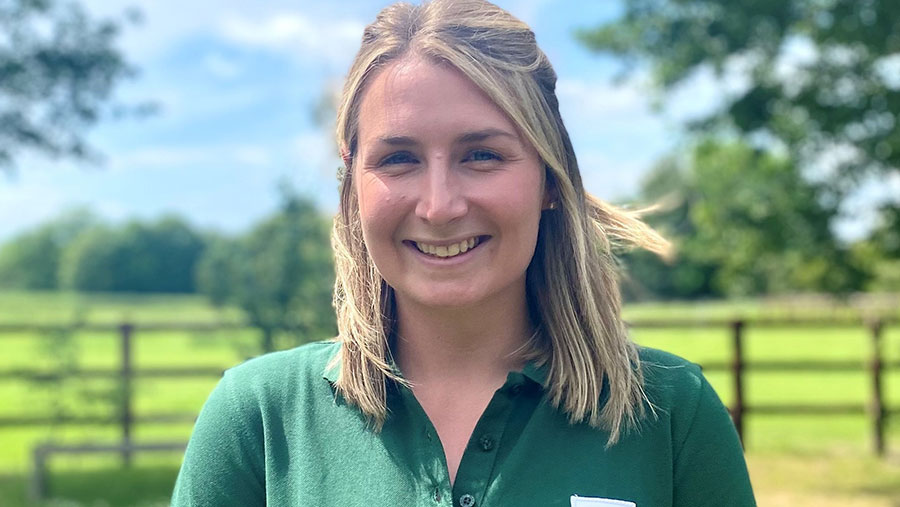Advertiser content
How KWS Dawsum became the UK’s most popular wheat
 © KWS UK Ltd
© KWS UK Ltd KWS Dawsum’s stellar performance in recent years has made it the UK’s most popular wheat and it looks set to keep that crown for some years, but there’s much more in the KWS pipeline.
Hard Group 4 wheat variety KWS Dawsum accounts for around 20% of all wheat grown in the UK this year with a wealth of management experience built up around how to get the most out of the variety, says KWS UK conventional crops product manager Dr. Kirsty Richards.
“A Costello/Kerrin cross launched in 2022, KWS Dawsum is the UK’s most popular wheat variety bar none, beating blockbuster varieties like Claire in 2003/04 with its 19% market share and JB Diego in 2013/14 with a 17% market share.
“This level of momentum across both growers and the trade as a whole, means it’s going be the ‘go to’ choice for UK feed wheat producers and buyers for many years to come.
“KWS Dawsum has an HFN of 299 and an outstanding specific weight of 79.9kg/hl which is essential for producers wanting to maximise returns plus it’s one of the lowest risk varieties you can grow.
“Even in 2023’s exceptionally challenging conditions that tested the resilience of many varieties, particularly with regard to lodging later in the season, KWS Dawsum stood up well.”
It’s a versatile variety too, with a yield of 106% when drilling early – before 25th Sept – and 103% in the mainstream and late sown slots, she points out.
“It’s a variety with an excellent disease package which includes 6.3 for Septoria and 9 for yellow rust to deliver an untreated yield of 91%, second only to KWS Extase on the RL.
“Plus, that high specific weight means there is a lot of room to play with before it starts dropping down below the minimum standard for feed of 72kg/hl.
“Two very different years of production have shown Dawsum very much living up to its heritage and RL performance with some key management strategies emerging to help growers get the most out of the variety.”

© KWS UK Ltd
Good as gold in the field
Agrii technical seed manager John Miles says growers can get a lot of insight into why KWS Dawsum is so popular by looking at its parents.
“Dawsum has many of Costello’s strong points, but there are some specific elements of KWS Kerrin which add to its appeal, with later drilled performance being one of those and really adding to its all-round versatility and flexibility in the rotation.
“There’s also Dawsum’s Timaru package for yellow rust resulting in a 9 for resistance which has proved very welcome, particularly as there are a lot of yellow rust susceptible varieties out there.
“There’s a growing weakness of brown rust in the RL, too, with a number of varieties with reasonable market share having not such a good brown rust score, but Dawsum is pretty good in that respect with a 7 on the RL.” Another point in the variety’s favour is it high specific weight which has been shown to hold up well in the field, he points out.
“Certain varieties that have a borderline bushel weight in an RL situation are going to struggle to achieve that in a farm situation
“You can’t manage specific weight up. It’s yours to give away so you have to start with a high value and that’s where KWS Dawsum has huge appeal because it has that high specific weight to start with.
“All in all, I would say KWS Dawsum has been as good as gold in the field and as we understand more and more about how to get the best out of it, it’s going to remain a grower favourite for many years to come.”
“KWS Dawsum has been as good as gold in the field and it’s going to remain a grower favourite for many years to come.”
Nitrogen efficiency trials
According to KWS UK conventional crops technical manager Olivia Bacon, KWS Dawsum responds well to nitrogen with a clearly identifiable ‘sweet spot’ for optimum applications identified in trials carried out by KWS and Yara.

Olivia Beacon © KWS
“Trials carried out in 2023, at Brixworth Farming in Northamptonshire, showed KWS Dawsum to start responding when 160kgN/ha was reached and this kept increasing right up to the highest application in the trials of 340kg N/ha.
“Using a 28:40:27 NPK fertiliser, this corresponded with a yield of 12.1t/ha and although yields did increase from the 11.9t/ha delivered by an application of 280kg N/ha, this was not statistically significant.
“In addition to its outright yield potential, KWS Dawsum has always been favoured by growers because of its ability produce high levels of protein in the grain and again this was in evidence in the KWS/Yara trials.
“Results for grain protein typically followed the yield curve. Highest protein content was 11.7% achieved with the top 340kg N/ha rate with 380kg N/ ha producing 11.2% although a 220kg N/ha application produced a very respectable yield of over 11.5t/ha and a protein content of 10.2%.
“Even at 160kg N/ha KWS Dawsum produced 10t/ha yields in the trials.”
Just chill…
Growers looking for an easy-to-manage Group 4 alternative to KWS Dawsum this season, should take a closer look at new KWS Mongoose, Kirsty Richards suggests.
“Candidate listed KWS Mongoose is a super short, very stiff type that is very early to mature, offering growers real harvest security even when the weather is subject to change.
“Like KWS Dawsum, Mongoose can be sown early in September through to the end of January with yields of 106% of controls seen in AHDB trials putting it ahead of many hard feed favourites.
“KWS Mongoose also offers growers an 8 for yellow rust, 7 for mildew, 7 for eyespot and 5.9 for Septoria with the benefit of being OWBM resistant making it attractive to many eastern region growers.”
For more northerly producers, new KWS Vicarage is a soft Group 4 wheat with the potential to serve the distilling market, she adds.
“KWS Vicarage is a good performer in the north, achieving its best potential in the region with a yield 104% of controls in AHDB trials.
“But it’s a truly resilient variety too, performing just as well in a drought year with 102% of controls achieved in 2022 as it does in a colder, wetter season such as 2023 when it delivered 102% of controls.”
Finally, for growers that have liked Graham, KWS Scope brings new genetics to UK growers in a cross that has the highly successful German-bred wheat Informer, highly regarded for being tall, clean and having bread making potential, as one of its parents, Kirsty Richards explains.
“KWS Scope has delivered excellent yields, especially in 2023 when it was one of the highest-yielding wheat lines in NL2 trials with 107% of controls, and it has a similar maturity to KWS Dawsum with positive disease ratings across the board including OWBM resistance.”
Provided by
KWS is one of the world's leading plant breeding companies combining 165 years of heritage with leading edge technology and a commitment to develop and deliver varieties with the best yields, disease resistance, physical traits and resistance to abiotic stress.
